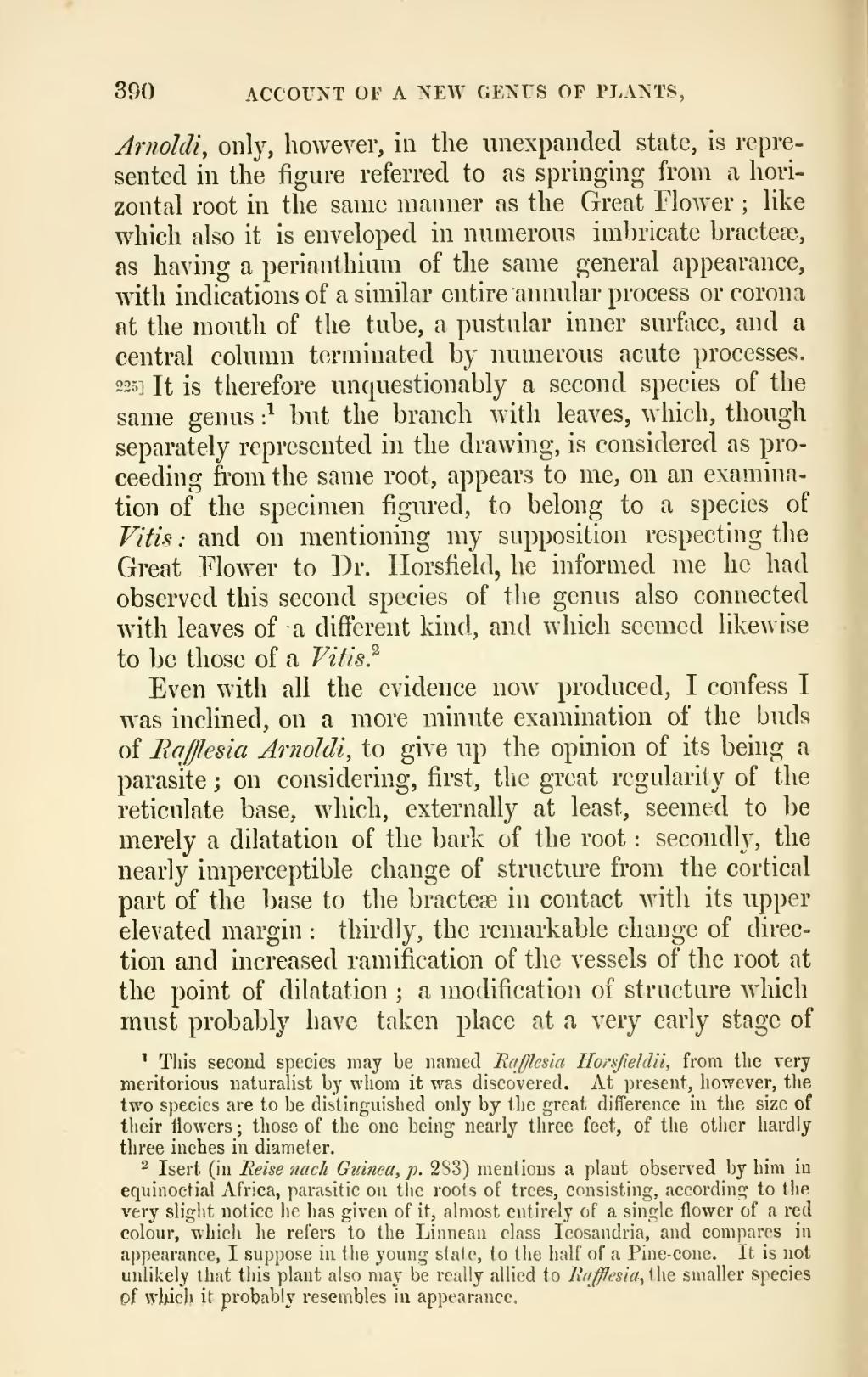390 ACCOUNT OF A NEW GENUS OF PLANTS,
ArnoUi, only, however, ia the unexpaiided state, is repre- sented in the figure referred to as springing from a hori- zontal root in the same manner as the Great Flower ; like which also it is enveloped in numerous imbricate bractene, as having a perianthium of the same general appearance, with indications of a similar entire annular process or corona at the mouth of the tube, a pustular inner surface, and a central column terminated by numerous acute processes. 225] It is therefore unquestionably a second species of the same genus } but the branch with leaves, which, though separately represented in the drawing, is considered as pro- ceeding from the same root, appears to me, on an examina- tion of the specimen figured, to belong to a species of Vitis : and on mentioning my supposition respecting the Great Mower to Dr. Horsfield, he informed me he had observed this second species of the genus also connected with leaves of a different kind, and which seemed likewise to be those of a F«7/5.^
Even with all the evidence noAv produced, I confess I was inclined, on a more minute examination of the buds of Bafflesia Arnoldi, to give up the opinion of its being a parasite ; on considering, first, the great regularity of the reticulate base, which, externally at least, seemed to be merely a dilatation of the bark of the root : secondly, the nearly imperceptible change of structure from the cortical part of the base to the bracteae in contact with its upper elevated margin : thirdly, the remarkable change of direc- tion and increased ramification of the vessels of the root at the point of dilatation ; a modification of structure which must probably have taken place at a very early stage of
^ This second species may be named 'Rafflesla Horsfieldii, from the very meritorious naturalist by whom it was discovered. At present, however, the two species are to be distinguished only by the great difference in the size of their flowers ; those of the one being nearly three feet, of the other hardly three inches in diameter.
- Isert (in Beise nacli Guinea, p. 2S3) mentions a plant observed by him iu equinoctial Africa, parasitic on the roots of trees, consisting, according to the very slight notice he has given of it, almost entirely of a single flower of a red colour, which he refers to the Linnean class Icosandria, and compares in appearance, I suppose in the young stale, to the half of a Pine-cone. It is not unlikely that this plant also may be really allied to Rajflesia^ the smaller species pf wbicl.i it probably resembles in appearance.
�� �
